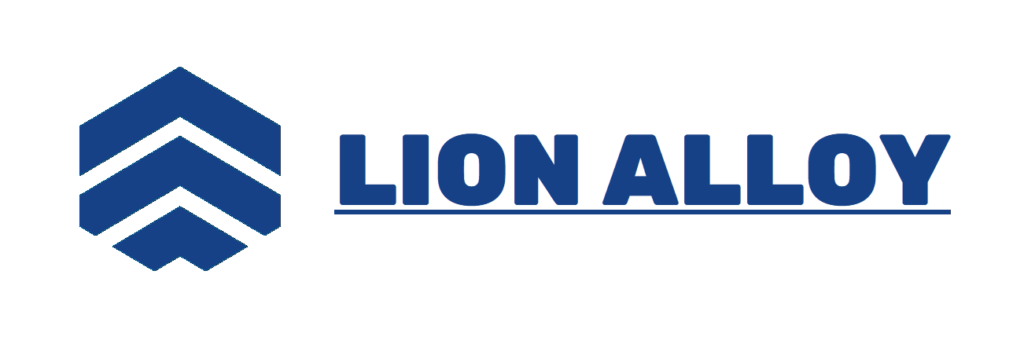การแนะนำ
NIMONIC 80A is a nickel-based superalloy specifically designed for high-temperature applications, offering exceptional mechanical properties and resistance to oxidation and corrosion. The machining of NIMONIC 80A components is a critical process that requires a comprehensive understanding of the alloy’s properties and appropriate machining techniques. This article explores various machining techniques, tools, and parameters specific to NIMONIC 80A, alongside the challenges faced during machining and solutions to optimize the process.
1. Properties of NIMONIC 80A Relevant to Machining
Before diving into the machining techniques, it is essential to understand the unique properties of NIMONIC 80A that influence its machinability.
1.1 Mechanical Properties
NIMONIC 80A exhibits a combination of high strength, ductility, and toughness, particularly at elevated temperatures. This makes it an ideal candidate for demanding applications but also presents challenges during machining due to work hardening.
Table 1: Mechanical Properties of NIMONIC 80A
| คุณสมบัติ | ค่า |
|---|---|
| ความแข็งแรงของผลผลิต (MPa) | 600 |
| ความต้านแรงดึงสูงสุด (MPa) | 860 |
| การยืดตัว (%) | 30 |
| ความแข็ง (HB) | 200 |
| โมดูลัสของความยืดหยุ่น (GPA) | 200 |
1.2 Thermal Properties
NIMONIC 80A maintains its mechanical integrity at elevated temperatures, which is crucial when considering cutting tool performance.
Table 2: Thermal Properties of NIMONIC 80A
| คุณสมบัติ | ค่า |
|---|---|
| Melting Point (°C) | 1300 |
| Thermal Conductivity (W/m·K) | 11.5 |
| Coefficient of Thermal Expansion (°C) | 13.3 x 10⁻⁶ |
2. Machining Techniques for NIMONIC 80A
2.1 Turning
Turning is a common machining process for producing cylindrical components from NIMONIC 80A. The choice of cutting tool and parameters significantly influences the quality and efficiency of the machining process.
2.1.1 Tool Selection
Carbide tools are typically recommended for turning NIMONIC 80A due to their hardness and wear resistance. Coated carbide tools can further improve performance by reducing friction and enhancing tool life.
Table 3: Recommended Tool Types for Turning NIMONIC 80A
| Tool Type | Coating Type | Benefits |
|---|---|---|
| Carbide Tool | TiN (Titanium Nitride) | Increased wear resistance |
| Ceramic Tool | Al2O3 (Alumina) | High cutting speeds |
| CBN (Cubic Boron Nitride) | - | Superior wear resistance at high temperatures |
2.1.2 Parameters and Techniques
Optimal parameters for turning NIMONIC 80A include:
Table 4: Turning Parameters
| พารามิเตอร์ | Recommended Value |
|---|---|
| Cutting Speed (m/min) | 30-50 |
| Feed Rate (mm/rev) | 0.1-0.3 |
| Depth of Cut (mm) | 1-5 |
To enhance chip removal and reduce heat generation, use a high coolant flow rate.
2.2 Milling
Milling NIMONIC 80A requires careful control of tool selection and machining parameters. The process can generate significant heat due to the alloy’s strength and hardness.
2.2.1 Tool Selection
Similar to turning, carbide tools are preferred for milling operations. Additionally, the use of end mills with a positive rake angle can facilitate better chip flow.
Table 5: Recommended Tool Types for Milling NIMONIC 80A
| Tool Type | Features | Benefits |
|---|---|---|
| Solid Carbide End Mill | 4-flute design | Improved chip removal |
| Coated Carbide Mill | TiAlN (Titanium Aluminum Nitride) | Enhanced tool life |
| Face Mill | Replaceable inserts | Flexibility in cutting geometry |
2.2.2 Parameters and Techniques
Table 6: Milling Parameters
| พารามิเตอร์ | Recommended Value |
|---|---|
| Cutting Speed (m/min) | 20-40 |
| Feed Rate (mm/tooth) | 0.05-0.2 |
| Depth of Cut (mm) | 1.5-4 |
Using a cutter with a larger diameter can reduce cutting forces and improve the surface finish. Employ generous coolant supply to control temperature and extend tool life.
2.3 Drilling
Drilling operations on NIMONIC 80A also require careful consideration of tool selection and parameters to ensure efficient hole creation without excessive tool wear.
2.3.1 Tool Selection
High-speed steel (HSS) or carbide drills with a sharp point are recommended for drilling NIMONIC 80A.
Table 7: Recommended Drill Types
| Drill Type | Features | Benefits |
|---|---|---|
| Carbide Drill | Coated with TiN | Wear resistance |
| HSS Drill | Variable point angle | Versatile and cost-effective |
2.3.2 Parameters and Techniques
Table 8: Drilling Parameters
| พารามิเตอร์ | Recommended Value |
|---|---|
| Cutting Speed (m/min) | 10-25 |
| Feed Rate (mm/rev) | 0.05-0.1 |
| Drill Diameter (mm) | Up to 20 |
Utilize coolant to prevent overheating and aid chip removal. Peck drilling can help when drilling deep holes, as it minimizes the heat build-up.
3. Challenges in Machining NIMONIC 80A
Despite its advantageous properties, machining NIMONIC 80A presents several challenges.
3.1 Work Hardening
One significant challenge is the work hardening tendency of NIMONIC 80A. This occurs when the coating and structure of the material harden due to deformation during machining.
Table 9: Effects of Work Hardening
| Effect | คำอธิบาย |
|---|---|
| Increased Tool Wear | Shorter tool life |
| Poor Surface Finish | Requires additional finishing operations |
| Higher Cutting Forces | Increased machine load |
3.2 Heat Generation
Machining NIMONIC 80A generates substantial heat due to its high strength, leading to thermal distortion and tool wear.
Table 10: Heat Management Techniques
| Technique | คำอธิบาย |
|---|---|
| Coolant Application | Use flood coolants to reduce temperature |
| Cutting Speed Adjustment | Lower cutting speeds to minimize heat generation |
4. Optimizing Machining Processes
To enhance the efficiency of machining NIMONIC 80A, several strategies can be employed.
4.1 Tool Coatings
Using advanced coatings on cutting tools can significantly improve their performance and lifespan. Coatings like TiN, TiAlN, and CBN provide increased wear resistance and reduce friction during machining.
Table 11: Tool Coating Comparisons
| Coating Type | Benefits | แอพพลิเคชั่น |
|---|---|---|
| TiN | Reduced friction | General machining |
| TiAlN | ความต้านทานอุณหภูมิสูง | High-speed machining |
| CBN | Hard materials machining | Heavy-duty applications |
4.2 Cutting Parameters Adjustment
Adjusting cutting parameters based on the characteristics of the specific operation and the equipment used allows optimization for tool life and productivity.
4.3 Advanced Machining Techniques
Employing techniques such as high-speed machining (HSM) or cryogenic machining shows promise in enhancing performance when working with NIMONIC 80A.
Table 12: Advanced Machining Techniques
| Technique | Benefits |
|---|---|
| High-Speed Machining (HSM) | Reduced cutting forces |
| Cryogenic Machining | Increased tool life |
5. บทสรุป
Machining NIMONIC 80A requires a blend of appropriate techniques, tools, and operational parameters tailored to its unique properties. Understanding the characteristics of this alloy and the challenges involved in machining can lead to better performance and efficiency in manufacturing. By leveraging the right tools, coatings, and machining strategies, manufacturers can optimize the production of NIMONIC 80A components, ensuring precision and quality while enhancing overall productivity. As the industry continues to evolve, keeping abreast of advancements in machining technologies and techniques will be essential for maintaining a competitive edge in working with high-performance materials like NIMONIC 80A.


